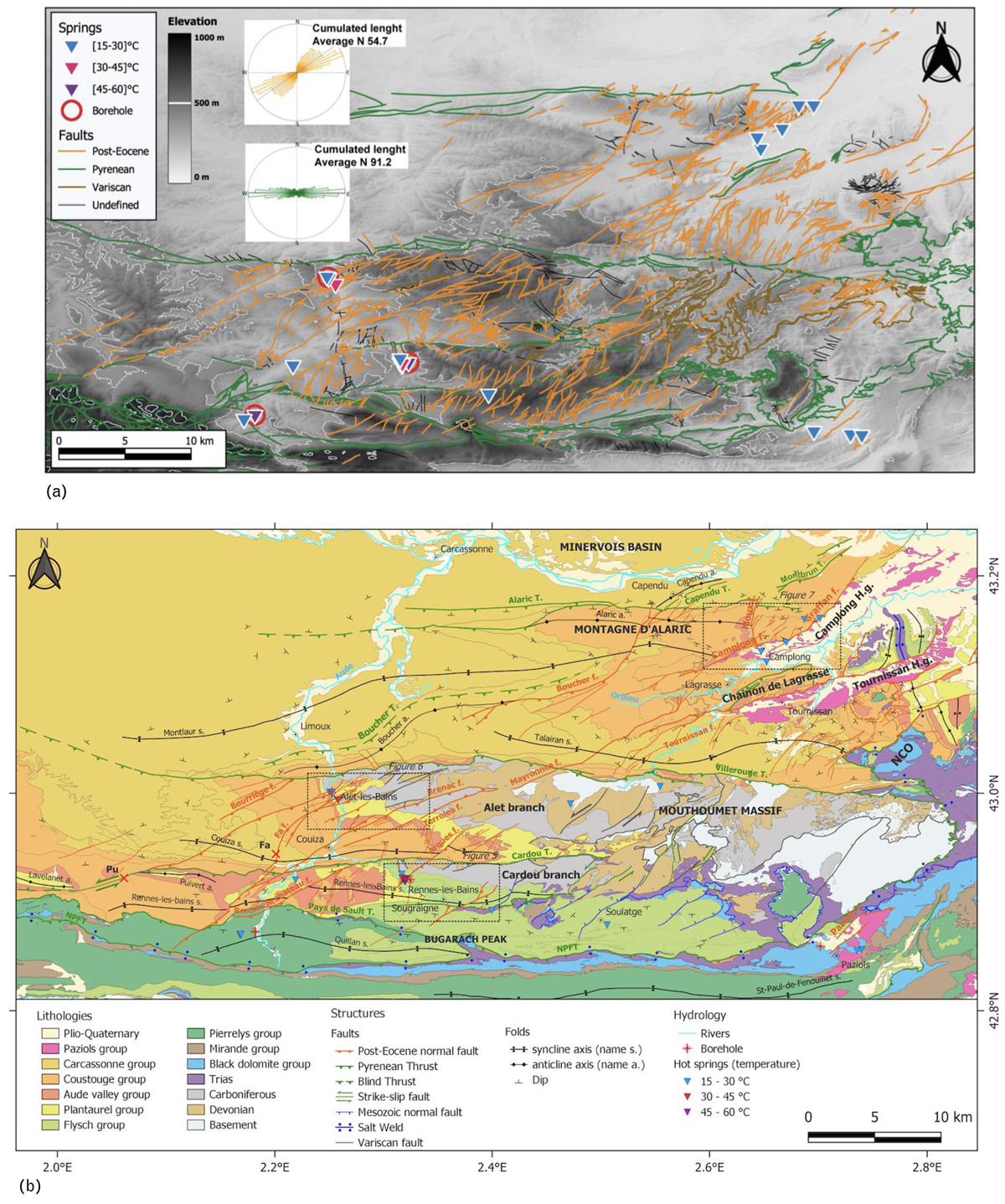Fig. 2

Download original image
a. Digital Elevation Model (SRTM 30m) with statistical mean direction of each faults network based on relative chronology (Pyrenean faults in green, mean direction N91.2°E; Post-Eocene faults in orange, N54.7°E) and the location hotsprings (>15 °C). b. Geological map of the Corbières region using chronostratigraphic chart (groups) described in Figures 3 and 4 after BRGM map (Bessière et al., 1977a; Souquet et al., 1984; Ellenberger et al., 1985; Crochet et al., 1989; Berger, 1990; Berger et al., 1993; 1997) and BRGM memoir (Bessière et al., 1977b; 1989; Ellenberger et al., 1987; Bilotte et al., 1988; Berger et al., 1990; 1993; 1997). Faults are colored by their last motion age (relative chronological mapping, field-work of this study and literature). Black dotted squares correspond to detailed geological maps of Figures 5–7. Hydrogeological mapping from BRGM books and memoirs (Pomerol and Ricour, 1992; Aunay and Le Strat, 2002; Elbaraka et al., 2010; Yvroux, 2012). Hotsprings are represented by triangles colored by temperatures and the boreholes pumping thermal waters are also indicated (Tab. 1). NCO : Nappe des Corbières Orientales.
Les statistiques affichées correspondent au cumul d'une part des vues des résumés de l'article et d'autre part des vues et téléchargements de l'article plein-texte (PDF, Full-HTML, ePub... selon les formats disponibles) sur la platefome Vision4Press.
Les statistiques sont disponibles avec un délai de 48 à 96 heures et sont mises à jour quotidiennement en semaine.
Le chargement des statistiques peut être long.




